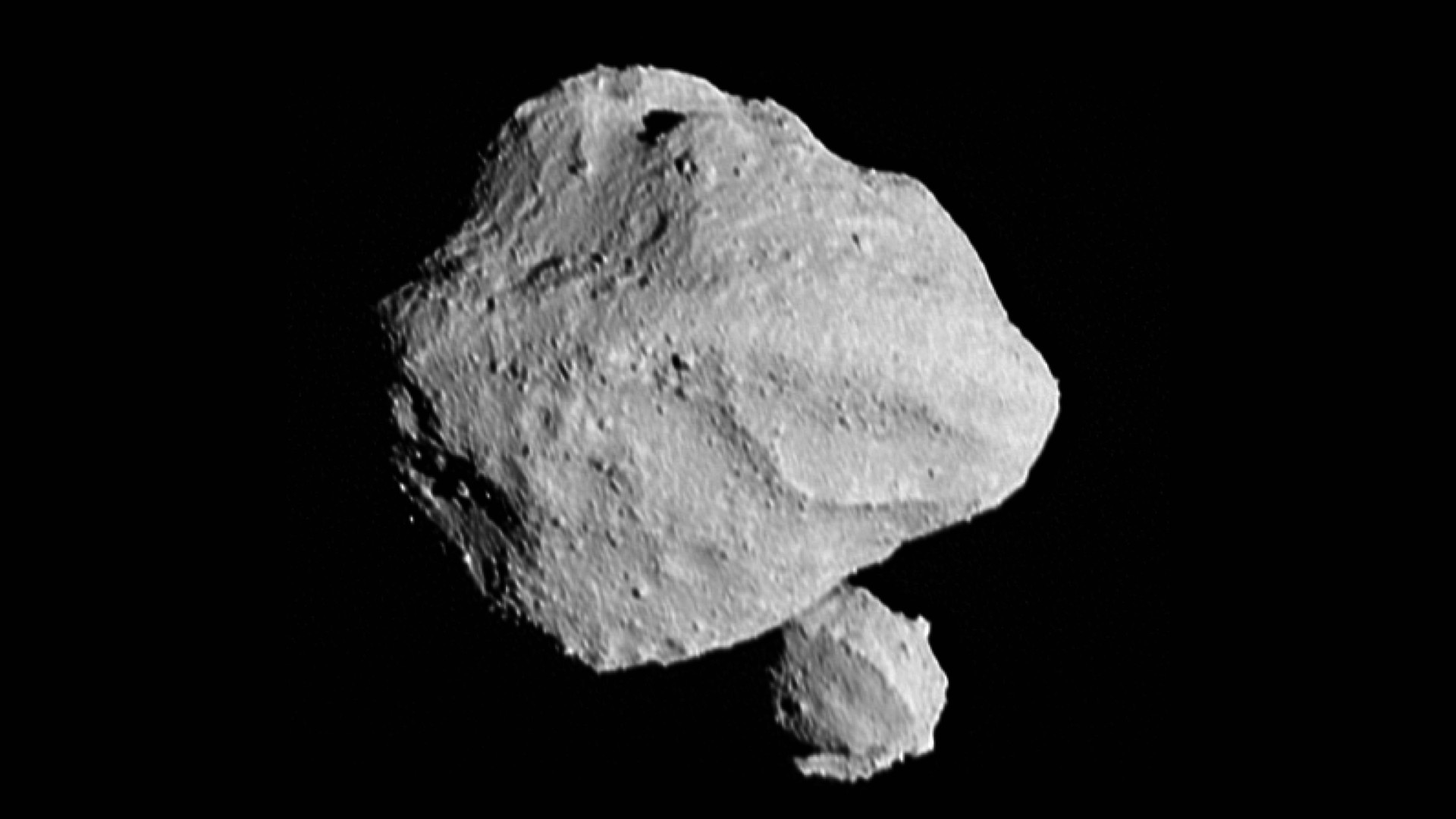Surprise! Asteroid 'Dinky' is actually a double space rock, NASA's Lucy probe reveals (photo)

The first-ever asteroid encounter of NASA's Lucy mission came with a twist, it turns out.
On Wednesday (Nov. 1), Lucy zoomed past Dinkinesh, a small space rock that resides in the main asteroid belt between Mars and Jupiter.
Actually, Lucy zoomed past two space rocks, for the probe found that Dinkinesh (whose name means "marvelous" in the Amharic language) is actually part of a binary system. The discovery added another layer of excitement to an already-historic encounter.
"We knew this was going to be the smallest main belt asteroid ever seen up close," Keith Noll, Lucy project scientist from NASA's Goddard Space Flight Center in Maryland, said in a statement today (Nov. 2).
"The fact that it is two makes it even more exciting. In some ways, these asteroids look similar to the near-Earth asteroid binary Didymos and Dimorphos that DART saw, but there are some really interesting differences that we will be investigating," Noll added, referring to NASA's Double Asteroid Redirection Test mission, which slammed intentionally into the asteroid moonlet Dimorphos in September 2022.
Related: NASA's LUCY mission snaps its asteroid targets for the 1st time
Lucy launched in October 2021 on a mission to fly by a half-dozen Trojan asteroids, space rocks that loop around the sun in Jupiter's orbit. These asteroids are relics from the solar system's early days, so Lucy's observations will shed light on the formation and evolution of our cosmic neighborhood, NASA officials say.
Breaking space news, the latest updates on rocket launches, skywatching events and more!
Dinkinesh is not a Trojan, but Wednesday's flyby was still important to the mission. It tested Lucy's terminal tracking system, which allows the probe to autonomously track an asteroid during a high-speed flyby. (Lucy zoomed past Dinkinesh at a relative speed of about 10,000 mph, or 16,000 kph, on Wednesday.)
"This is an awesome series of images. They indicate that the terminal tracking system worked as intended, even when the universe presented us with a more difficult target than we expected," Tom Kennedy, a mission guidance and navigation engineer at Lockheed Martin in Littleton, Colorado, said in the same statement. "It's one thing to simulate, test and practice. It's another thing entirely to see it actually happen."
Though the encounter was primarily a test, Lucy did gather some interesting data about Dinkinesh. For example, the probe helped nail down the size of the two asteroids. The larger rock is likely about 0.5 miles (790 meters) across at its widest point, for example, while the smaller one is about 0.15 miles (220 m) wide, NASA officials said.
Those are early estimates, however. It will take up to a week for Lucy to send home all of its flyby data, NASA officials said, and the mission team will take more time after that to analyze the observations.
Wednesday's flyby will be just the first of many for Lucy, if all goes according to plan. The probe will now head back toward Earth for a "gravity assist" that will slingshot it toward its next asteroid target, a main belt space rock named 52246 Donaldjohanson . (Donald Johanson is the co-discoverer of the famous human-ancestor fossil Lucy, after which the NASA mission is named.)
That next flyby will occur in 2025. Lucy will then cruise on toward the Jupiter Trojans, the first of which it will reach in 2027.
"Dinkinesh really did live up to its name; this is marvelous," Hal Levison of the Southwest Research Institute, Lucy's principal investigator, said in the same statement.
"When Lucy was originally selected for flight, we planned to fly by seven asteroids," Levison added. "With the addition of Dinkinesh, two Trojan moons and now this satellite, we've turned it up to 11."

Michael Wall is a Senior Space Writer with Space.com and joined the team in 2010. He primarily covers exoplanets, spaceflight and military space, but has been known to dabble in the space art beat. His book about the search for alien life, "Out There," was published on Nov. 13, 2018. Before becoming a science writer, Michael worked as a herpetologist and wildlife biologist. He has a Ph.D. in evolutionary biology from the University of Sydney, Australia, a bachelor's degree from the University of Arizona, and a graduate certificate in science writing from the University of California, Santa Cruz. To find out what his latest project is, you can follow Michael on Twitter.

